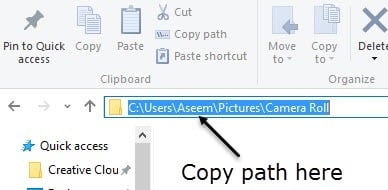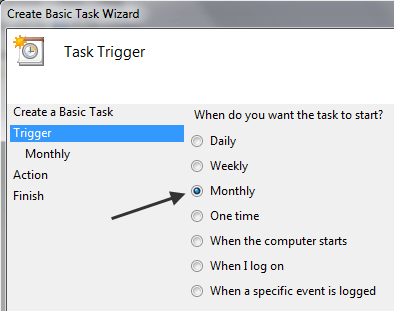How To Delete Files In Windows 10
Before I wrote about a program called DropIt that automatically moves or copies files for you when new files appear inside a folder. This can be useful, for instance, if you have limited space on a local hard drive and want to motility all your downloads off to an external storage device.
If yous want to automatically delete files, there are ii means y'all tin get about information technology in Windows. The first method involves downloading a freeware app chosen AutoDelete that lets you configure a schedule for deleting files in a detail folder. I've already written two detailed guides on using the program (here and here), so check those out if you adopt a freeware plan to get the chore done.
The second method for deleting files is to create a batch file and so schedule that batch file to run. You can practise all of that without installing any third-party software. In this article, I'll walk you through the steps for creating a batch file so using Task Scheduler to have the script run on a reoccurring basis.
Step 1 – Create Batch File
If creating a batch file sounds a bit scary or as well technical, don't worry considering you don't take to know what any of that ways. I'll explain what you need to re-create and paste, where and what options yous can change. Get-go, open up Notepad and copy and paste the following line of text:
forfiles -p "C:\Test" -s -g *.* /D -five /C "cmd /c del @path"
The line above probably makes no sense, which is perfectly fine as I'll explain information technology down below. Basically, it tells Windows to delete all files in the C:\Exam folder and sub-folders that are older than v days. Hither is what your Notepad file should look similar.

Before we go into more details nigh the command, let'southward save the file and requite information technology a test run. First, create a folder on your computer called Test at the root of the C drive. Side by side, click File – Save and save the file as a batch file. To do that, blazon in a name followed by .bat and and so alter the Save as blazon dropdown to All Files.

Annotation that you can save the file to whichever location on the hard drive you like, it doesn't really matter. Now create some dummy files in the Exam folder and then double click on the Delete.bat file to run it. Anything go deleted? Probably not!
The reason why nothing was deleted is because the control has /D -5, which means files that are 5 days or older. In club to delete any file regardless of when it was created, you can either change the -5 to -0 or you can remove the /D -5 part altogether. Now if you run it, all the files will exist deleted.
To customize the command, the commencement matter you lot can do is alter the directory to something other than C:\Test. That's as simple as copying the path from Windows Explorer for the directory you want and pasting information technology into the command in Notepad.

Side by side is the -s parameter that you see after the directory path. This indicates that the command should look into all sub-folders also. If you do not want to delete files from subfolders, become alee and remove the -south parameter.
Adjacent is -chiliad followed by *.*, which means that the command should evaluate files of every kind. If y'all only want to delete a specific file type in a folder, like PDF files or JPG images, just change *.* to *.pdf or *.jpeg and information technology will only remove those files.
The /D -10 role we already talked most in terms of how old the files accept to exist in order to qualify for deletion. You lot can either continue it with a value greater than 1, set it to 0, or remove it birthday. That's most all we need to know about the control.
There are a few things to note about running this command. Firstly, when files are deleted, they do not go to the Recycle Bin, just instead are deleted permanently, so be careful when using it. Secondly, the command only deletes files, non folders.
Since this is a batch file, you could also add multiples versions of this command in the same file. For case, here I am creating a batch file that will delete all DOCX files older than 180 days, all PDF files older than 60 days and all TXT files regardless of how old the files are.

Step ii – Schedule Batch File
Now that you have your batch file created and saved, let'south go alee and schedule it to run on a reoccurring basis. To practise this, nosotros have to open up Task Scheduler.
Luckily, I've already written an article on how to schedule a batch file, and so open that folio to become started. Gyre down to the Schedule Batch File on PC Startup section and follow forth.

The only thing y'all accept to change is the Trigger. You can cull from Daily, Weekly, Monthly, When the computer starts, When I log on or When a specific event is logged.
When y'all choice something like Weekly or Monthly and click Next, you'll become a new screen where you can configure the verbal time and days you desire the script to run.


Hopefully, this is a good solution for well-nigh people who demand to perform some unproblematic automated tasks for deleting files on their PCs. If you have any questions, feel free to post a comment. Savour!
Practise not share my Personal Data.
How To Delete Files In Windows 10,
Source: https://www.online-tech-tips.com/software-reviews/automatically-delete-files/
Posted by: romeroforer1992.blogspot.com


0 Response to "How To Delete Files In Windows 10"
Post a Comment